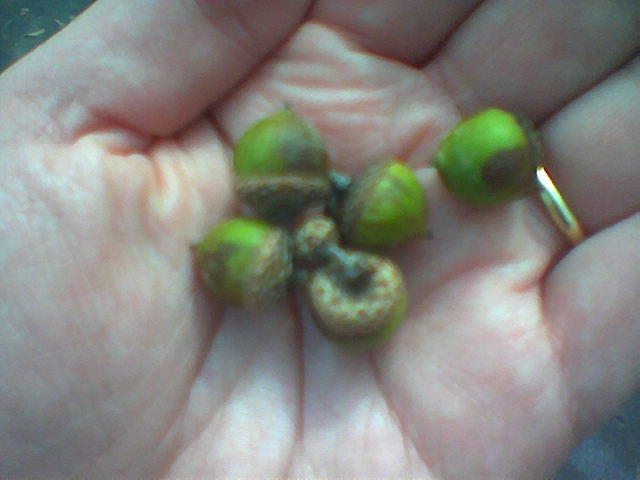
Acorns.
It's all about me.
The design of his first Chinese city (yes, an ENTIRE CITY) was approved 3 weeks ago. The plans are exciting: they are "moving the farms to the roofs," ensuring that every apartment receives natural light, placing a pedestrian beltway around the city that is not bisected by large thoroughfares so that children and elders can access everything without having to cross busy intersections, and incorporating "waste to food" recycling.
Releasing Cradle to Cradle Protocols to the Public Domain: They are making the protocols for Cradle to Cradle design public so that anyone can design buildings or products around those specifications. Which will then lead to . . .
Cradle to Cradle certification: They will be certifying designs, products, and buildings with a Cradle to Cradle brand. Companies will be able to submit products to them and get a seal of approval. He partially justified the need for this by explaining that LEED certification for buildings, for example, allows for PVC to be recycled, which he thinks isn‘t a good thing. So Cradle to Cradle certifications will be stricter than LEED certifications.
"...one of the most familiar images of the brain is that of an information processing system, importing information from the environment and initiating appropriate responses. The brain is viewed as making representations of the environment, recording these in memory, and modifying the information stored through experience and learning. In contrast Maturana and Varel argue that the brain is closed, autonomous, circular, and self-referential. They argue that the brain does not process information from an environment as an independent domain and does not represent the environment in memory. Rather it establishes and assigns patterns of variation and points of reference as expressions of its own mode of organization. The brain organizes its environment as an extension of itself.From there, Morgan moves into talking about business and competition:
If one thinks about it, the idea that the brain can make some representation of its environment presumes some external point of reference from which it is possible to judge the degree of correspondence between the representation and the reality. This implicitly presumes that the brain must have a capacity to see and understand its world from a point outside itself. Clearly, this cannot be so. Hence, the idea that the brain represents reality is open to serious question."
"In the long run, survival can only be survival with, never survival against, the environment or context in which one is operating.I'm starting to see how this all ties together with third party action research, sustainability principles, and the triple bottom line. But they are still weak links for me - I have to keep reaching out and digging in to make the connections.
In seeing how our suppliers, market, labor force, local, national, and worldwide community, and even competition are really parts of the same system of organization, it becomes possible to move toward an appreciation of systemic interdependence. Many organizations have succeeded in making major breakthroughs by breaking and reshaping the boundaries traditionally drawn between themselves and their customers and competition, creating a new sense of identity for themselves and the system as a whole."